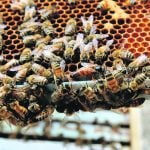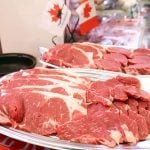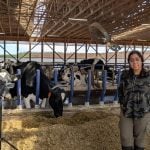A “virtual fence” system for cattle herds, developed by the U.S. Department of Agriculture’s Agricultural Research Service (USDA/ARS), will be marketed to cattle producers by a Nova Scotia tech firm.
Krimar Enterprises, based at Lower Sackville, about 15 km north of Halifax, gets an exclusive license to market ARS’s directional virtual fencing (DVF) system as a “type of non-wire, virtual fencing technology for cows linked to global positioning,” the U.S. agency said in a release Wednesday.
DVF, shown here in a video demonstration, sends electronic cues to a cow’s ears so it will move in a preferred direction, according to Dean M. Anderson, an ARS animal scientist at the Jornada Experimental Range at Las Cruces, N.M.
Read Also

Mexico agriculture secretary says still no date for restarting cattle exports to U.S.
Mexican Agriculture Minister Julio Berdegue said on Wednesday that Mexico and the United States have not yet set a date to resume Mexican cattle exports amid an outbreak of the flesh-eating screwworm parasite.
“The patented system is not intended to replace a rancher’s expertise, but will be used as an animal management tool,” ARS wrote. “The system will be able to steer a moving animal without inflicting physical harm.”
Cows must be moved periodically to quality forage for optimum performance, ARS said, and those left too long in the same area also can damage a landscape by overgrazing the standing crop.
The vast spaces on many ranches also make controlling a herd’s movements challenging, said ARS, the USDA’s principal scientific research agency.
Unlike the remote electric-shock collars used in some virtual fencing systems for domestic animals, the DVF system locates cows with global positioning and sends auditory signals, such as a human voice, that can be raised or lowered in volume, according to Anderson.
The commands, he said, can vary from familiar “gathering songs” sung by cowboys during manual round-ups to sirens designed to get cows to move or avoid entering forbidden areas.
The system is also automated, ARS said, so ranchers can give cues at any time and track movements from a computer.
ARS patented the DVF technology based on experimental designs. Anderson said he is now working on a “commercially viable” prototype that would feature a stereo headset around each ear.











